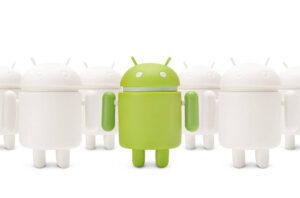It’s worth noting that the Fast Food Business Sector has become integral to modern lifestyles, offering convenience and quick meals to customers on the go. The fast food business industry has significantly transformed in recent years by integrating innovative technology. Today, some ever-evolving innovative technologies have emerged as game-changers in the fast food industry.
Famous restaurant chains’ rising adoption of franchise business models and the expanding food and beverage (F&B) industry are among the primary factors driving the fast food market. In line with this, the emerging trend of cafe culture and the increasing number of fast-food outlets, Quick Service Restaurants (QSRs), meal trucks, etc., further augment the business market growth.
Moreover, the launch of various innovative and exotic recipes by famous fast-food eateries using natural, organic, and plant-based ingredients, the high working population, busy schedules, and the improving consumer lifestyles catalyze the global market. Apart from this, there is a growing popularity of food ordering apps and various home-based models offering doorstep delivery.
This is coupled with fast and easy ordering and discount offers that are significant growth-inducing factors. Furthermore, the development of touchscreen kiosks, digital kitchen display screens, digital sales terminals, and the modernization of the retail industry is anticipated to propel the fast food market over the forecasted period. Businesses need to utilize technology in their strategies.
In other words, it’s worth mentioning that technological advancements have revolutionized various aspects of the fast-food business industry, from enhancing customer experience to streamlining operations. With that in mind, this guideline article explores how the fast-food business sector can leverage innovative technology to improve efficiency, customer satisfaction, and overall success.
How Innovative Technology Helps In Empowering The Fast Food Business Sector
Realistically, fast food is one of the world’s fastest-growing food business industry types. It now accounts for roughly half of all restaurant revenues in developed countries and will continue to expand there and in many other industrial countries in the coming years. However, some of the most rapid growth occurs in the developing world, radically changing how people often eat.
Most customers buy fast food because it’s cheap, easy to prepare, and heavily promoted. This paper aims to provide information about the fast food industry, its trend, its emergence, and several other factors responsible for its growth. In other words, the fast food business sector refers to edible items that are easily prepared and commonly made by chefs using pre-cooked ingredients.
Chefs facilitate the immediate preparation and preservation of meals. Fast food is generally manufactured in bulk in advance and then heated and packaged for takeaway or dine-in. Common edible variants include pizza, fries, noodles, sandwiches, and burgers. Markedly, some of these fast food business joints act as a faster, more convenient alternative to self-prepared (homemade) meals.
As a result, fast food is gaining immense traction among consumers and is widely served in hotels, Quick Service Restaurants (QSRs), and street vendor shops across the globe. It’s important to realize that the fast food concept emerged in the 1920s. At the same time, the 1950s first witnessed their rapid proliferation. Several factors contributed to the explosive growth of this industry.
Below are some of these factors:
- First, the American’s love affair with the automobiles.
- Secondly, a significant new highway system was constructed.
- Thirdly, the development of suburban communities.
- The baby boom after World War II, among other factors.
“Fast-food chains initially catered to automobile owners in suburbia. The notion of “fast” food reflected American culture in which speed and efficiency are highly prized.” This fast food business is quite popular because it provides tasty food quickly and cheaply. Open a fast food business, and you will provide people with an affordable means of eating, staying energized, and feeling fulfilled.
Some Innovative Technologies That Can Help Elevate Fast Food Business
The concept of fast food isn’t new. Early in the 19th century, at the start of the Industrial Age, when people had to work 12 to 14 hours a day, there was scarcely any time for long breaks for eating. As a result, the first snack bars and kiosks arose in front of factories. Today, quick meals outside the home have become essential to our lifestyle. The term “fast food business” means just that.
However, the boundary between the fast food business and traditional dishes is fluid. In particular, it’s challenging to provide a qualitative distinction because fast foods can also include salads and fruit and classic offerings such as hamburgers, hot dogs, sandwiches, patties, French fries, fish and chips, etc. The best way to distinguish fast foods is to use the most formal characteristics.
For instance, the time required—those who eat fast foods do not want to spend a lot of time selecting and eating, and if necessary, will eat standing or walking, on the bus, on a park bench, or at work. Some foods and beverages are very limited. They frequently do not come with knives and forks, making it “finger food.” When silverware, cups, and plates are necessary—they are disposable.
Resource Reference: Things to Consider Before Opening a Fast Food Restaurant
The characteristics of fast food, therefore, are that they require little time, offer a limited selection, are finger food, and are disposable silverware and plates. These characteristics readily illustrate the difference from traditional dining culture. In most cases, many customers equate fast businesses with convenience foods. This is incorrect since convenience products are often eaten at home.
They require active participation because they must be heated, stirred, baked, thawed, etc., and are supplemented with other foods. There are three general categories of fast food businesses. They include self-service restaurants with a fast-food palette like McDonalds, Wendy’s, Burger King, Pizza Hut, etc. Next, take-out (take-away) businesses that sell ready-to-eat foods and beverages.
As well as on the street corner joints, such as hot-dog stands and snack stands with counters or stand-up tables. By all means, a fast food business sells affordable food to customers in as little time as possible. These restaurants provide service by way of drive-thrus as well as traditional sit-down meals. Some customers bring their orders in a “to-go” system. Below are the driving forces.
1. Digital Ordering Systems
One of the most noticeable technological advancements in the fast food industry is the implementation of digital ordering systems. Online platforms, mobile applications, and self-service kiosks have streamlined the ordering process, allowing customers to browse menus, customize their orders, and pay conveniently. Integrating user-friendly interfaces and secure payment gateways has enhanced the ordering experience, reducing wait times and minimizing errors in the order-taking process.
2. Delivery Services Solutions
The rise of delivery apps and services has significantly impacted the fast-food sector. Partnering with third-party delivery services or developing in-house delivery apps has expanded the reach of fast-food chains, enabling customers to enjoy their favorite meals at their doorstep. Using GPS tracking and real-time updates, these apps offer transparency and convenience, providing customers with accurate delivery times and allowing businesses to manage their delivery operations more efficiently.
3. Automation And Robotics
Innovative technology, such as automation and robotics, has revolutionized the backend operations of fast food businesses. Automated kitchen equipment, including robotic arms for food preparation, automated fryers, and assembly line robots, have increased efficiency and consistency in food production. This technology minimizes human error, speeds up processes, and ensures standardization in the quality of food served.
4. Digital Fast Food Menus
The introduction of digital fast-food menus has reshaped how customers interact with restaurant offerings. These digital menus, accessible through mobile applications or in-store kiosks, offer an interactive and engaging experience, transforming the traditional ordering process. Through these platforms, customers can access comprehensive menus with vivid images.
As well as detailed descriptions and customization options for each item. This visual representation significantly enhances the ordering experience by allowing customers to make informed meal decisions. Moreover, these digital menus, like Subway Menu, often include nutritional information, catering to health-conscious consumers who seek transparency in their food choices.
5. Personalized Data Analytics
Data analytics has empowered fast food chains to gain valuable insights into customer preferences and behaviors. Companies can customize offerings, devise focused marketing strategies, and refine menu items based on favored selections by analyzing customer data acquired via loyalty programs, online orders, and feedback mechanisms. Personalization enhances customer satisfaction and fosters loyalty by catering to individual preferences.
6. AI And Machine Learning Tools
On the one hand, Artificial Intelligence (AI) and Machine Learning (ML) applications have reshaped various aspects of fast food operations. On the other hand, Chatbots and virtual assistants offer customer support, answer queries, facilitate orders, and provide round-the-clock assistance. AI-driven predictive analytics aid in inventory management, demand forecasting, and supply chain optimization, reducing waste and ensuring efficient stock levels.
7. Contactless And Cashless Payments
Technological advancements have accelerated the shift towards contactless and cashless payments. Fast food businesses have adopted Near Field Communication (NFC) technology and mobile wallets. It allows customers to make secure payments using smartphones or contactless cards. This trend enhances convenience and promotes hygiene and efficiency in transactions.
8. Seamless AR And VR Technologies
Equally important, Augmented Reality (AR) and Virtual Reality (VR) technologies have emerged as tools to enhance customer engagement and experience. Fast food chains have utilized AR for interactive menu displays or promotional campaigns, allowing customers to visualize menu items more engagingly. VR can be leveraged for immersive brand experiences or virtual tours, captivating customers and leaving a lasting impression.
9. Sustainable And Eco-Friendly Innovations
Innovative technology is also driving sustainability initiatives in the fast-food industry. Implementing eco-friendly packaging materials, utilizing energy-efficient equipment, and incorporating sustainable practices in food production contribute to reducing the environmental impact of operations. Furthermore, technology enables businesses to track and optimize resource consumption, minimizing waste and promoting a more sustainable approach.
10. Intuitive Restaurant Management Systems
Short for “point of sale,” a restaurant POS system is both the software and hardware restaurants use to take customers’ orders, accept payments, manage food inventory, and ultimately manage the entire operation — from the front of the house (FOH) to the back of the house (BOH). However, there is still much to learn about modern point-of-sale systems. Whether you run a quick service restaurant, fast casual restaurant, or takeaway joint, a restaurant Point-Of-Sale (POS) system is invaluable. So, you should set out to demystify everything they can do and what hardware you need to operate one effectively.
The Best Practices For Business Owners To Manage Their Storefront Joints
Remember, from the business sector perspective, fast food is prepared and served quickly at a fast food restaurant or a shop. It is usually served in a carton or bags to minimize cost. In most cases, fast food outlets often provide take-away or take-out foods in addition to sit-down services. Notwithstanding, fast food is a multi-billion dollar industry that will continue to grow in the future.
Realistically, fast food is one of the world’s largest-growing food types. These businesses are often associated with highly processed and prepared industrial products — with standard ingredients, methodical cooking, and production methods. Generally, the percentage share of total consumer expenditure on food served by service joints increased from a very low base to 2.6% in 2001.
Eating at home remains ingrained in most cultures. Equally important, the changes in eating habits are prolonged, moving with barriers to eating out entrenched in specific sectors of society. Traditionally, eating out was looked down upon in society. Some factors fostering fast food demand include nuclear families, particularly in urban areas, exposure to global media, and Western cuisine.
Likewise, an increasing number of women joining the workforce have impacted eating-out trends. Increasingly, eating out is becoming synonymous with entertainment. And very often, it is preferred as a time-saving option to cooking. Be that as it may, fast-food business owners and managers need to utilize various data analytics methods to help steer great market experiences.
Utilizing Data Analytics To Help Optimize And Convert Target Customers
Usually, fast food restaurant analysis is a marketing research function that shows how certain fast food restaurants compare sales, service, and even product quality with their market competitors. The analysis can be procured through secondary research, existing data that can be purchased, or through primary research surveys, including phone interviews and mail or Internet questionnaires.
As mentioned, the fast food industry is a big part of the food world, offering fast meals to thousands of people worldwide. Remember, fast-food restaurants are places where you can get food quickly. They serve meals that are already prepared and ready to eat. As a rule of thumb, these restaurants focus on being quick and convenient, offering drive-thru or self-service options.
Resource Reference: How To Start A Fast Food Restaurant (15 Steps & Checklist)
The menu usually includes popular items like burgers, sandwiches, tacos, pizza, fried chicken, and others. Their main aim is to serve customers fast so they can enjoy their meal right away, either on the go or in the restaurant. In other words, learning how to start your fast-food restaurant can be an exciting idea if you love food and have an entrepreneurial mindset to own a business.
Next, you can compare your performance data for lunch and dinner with your competitors to know whether their customers purchase inside or at the drive-thru. In the long run, the data can better help you plan for your next digital online marketing and advertising campaigns by conducting exclusive market research. With that in mind, below are a few other essential data elements.
1. Valuation
Secondary fast food industry analysis can be purchased through companies such as the NPD Group or A.C. Nielsen. This industry data often includes market share information and unit or dollar sales by competitors. Another crucial secondary research measurement is day part analysis. Fast food companies like to know the percentage of customers that visit their restaurants.
2. Preference
Fast food companies also analyze the industry through primary research, including qualitative and quantitative studies. In qualitative research, a fast food company may ask consumers to compare one of their new products to a competitive item in terms of quality and price. Qualitative research is usually conducted through focus groups. Quantitative studies are usually conducted through phone surveys, where more detailed information is collected on the quality of competitive products.
3. Awareness
Fast food industry analysis can also be conducted through awareness, trial, and usage (ATU) studies. An ATU study measures brand and advertising awareness among various fast-food competitors. For example, consumers are usually more familiar with the names and advertisements of larger fast-food restaurants. In addition, an ATU study can also measure how often customers visit one fast food restaurant per week or month vs. all of the other ones.
4. Interaction
One crucial function of fast food industry analysis is to measure customer satisfaction among the different fast food restaurants. Fast food companies are interested in measuring how they fare vs. their competitors in service, hospitality, cleanliness, and even value for the money, according to the article “Fast Food Customer Service Scores” at businessweek.com. Other important comparative attribute ratings include location convenience and order accuracy.
5. Performance
Data analysis can also include demographic comparisons among key competitors, such as the average age, income, and household size of each competitor’s customers. Other critical demographic variables are the education level and typical profession of each fast food company’s customers. The latter two measurements can be used better to target a fast food restaurant’s magazine adverts.
Wrapping Up;
The fast food business industry is a sector that continues to evolve by embracing innovative technology, transforming how businesses operate and interact with customers. From digital ordering systems and delivery services to automation, data analytics, and sustainability initiatives, technology plays a pivotal role in enhancing efficiency, customer satisfaction, and sustainability.
Multinational fast-food companies have given domestic competition a run for its money. While McDonald’s sells more than Nirulas, Pizza Hut and Domino’s business do more than Pizza Corner. The main reason behind the success of multinational chains is their expertise in product development, sourcing practices, quality standards, service levels, and standardized operating procedures.
Regarding their competitive restaurant businesses, this is a strength they have developed over years of experience worldwide. Some have applied their learning experience from other countries in all the processes, including consistency, marketing, distribution, and training, to the local market conditions. It’s now that the domestic chains have realized the importance of such vital practices.
Other Related Resource Reference Topics:
- Building An Online Storefront | A Comprehensive Guide
- Cloud Kitchens | 5 Key Benefits & How You Can Get Started
- Online Ordering | 10 Best On-demand Food Delivery Applications
- How To Design An App Like Talabat For Online Food Deliveries
- A Healthy Food Business Startup Tips | The Main Pros And Cons
- Online Store | 9 Simple Steps To Start Selling Your Products
Unfortunately, multinational fast-food chains like McDonald’s and Pizza Hut are still on a learning curve, trying to customize their menu to fit their target customers’ tastes and food preferences. Fortunately, the domestic fast-food chains are at an advantage since they understand their potential consumer behavior and eating habits, and their product offerings have been tailored accordingly.
Embracing various innovative technological advancements enables fast-food business sectors to stay competitive, adapt to changing consumer demands, and pave the way for a more tech-driven future. Likewise, you can use this fast-food restaurant business plan example as your essential guide to creating your custom strategy. Furthermore, you can even download it free for quick editing.
Some Answers To Topmost Frequently Asked Questions:
1. What are some key examples of innovative technology in the fast food industry?
Examples include digital ordering systems (online platforms, mobile apps, self-service kiosks), delivery service apps, automation (robotic arms, automated kitchen equipment), AI-driven applications (chatbots, virtual assistants), contactless payment methods, AR/VR experiences, and sustainability initiatives.
2. How do digital ordering systems improve customer experience in fast food establishments?
Digital ordering systems streamline the ordering process, allowing customers to customize their orders, browse menus conveniently, and make secure payments. This reduces wait times, increases order accuracy, and enhances customer experience.
3. What benefits do AI and machine learning offer to fast food operations?
AI and machine learning technologies facilitate predictive analytics for inventory management, enhance customer support through chatbots, optimize processes for efficiency, and aid in making data-driven decisions for better business outcomes.
4. How does integrating delivery apps impact the fast food industry?
Delivery apps have expanded the reach of fast food chains by providing convenient doorstep delivery services. These applications enable customers to easily order food from their favorite fast-food establishments, increasing sales and customer satisfaction.
5. Can innovative technology in fast food businesses contribute to sustainability efforts?
Yes! Technology is being used to implement sustainability initiatives in the fast-food industry. This includes adopting eco-friendly packaging materials, utilizing energy-efficient equipment, tracking resource consumption, and reducing waste through technology.








Greetings from Florida! I’m bored at work so I decided to check
out your site on my iphone during lunch break.
I really like the knowledge you provide here and can’t wait to take a look when I get home.
I’m shocked at how quick your blog loaded on my mobile ..
I’m not even using WIFI, just 3G .. Anyways, very good blog!
Thanks for your input.
We look forward to seeing you in our future blogs.
Unquestionably believe that which you said.
Your favorite justification seemed to be on the net the simplest thing to be
aware of. I say to you, I certainly get annoyed while people
consider worries that they just do not know about. You managed to hit
the nail upon the top and also defined out the whole thing
without having side effect , people could take a signal.
Will probably be back to get more. Thanks
Hi there! Would you mind if I share your blog with my zynga group?
There’s a lot of people that I think would really enjoy your content.
Please let me know. Many thanks
Of course, you can always share our blog insights with others.
You are welcome!
Comments are closed.